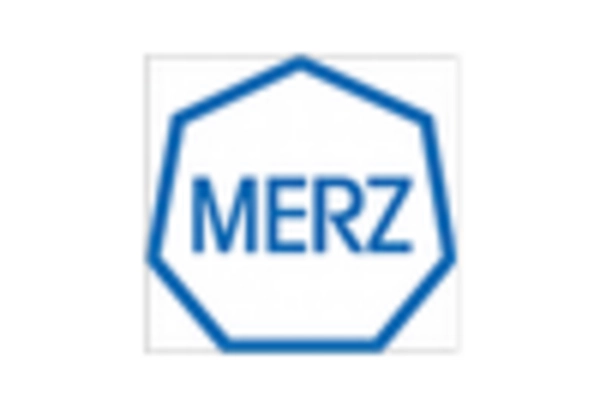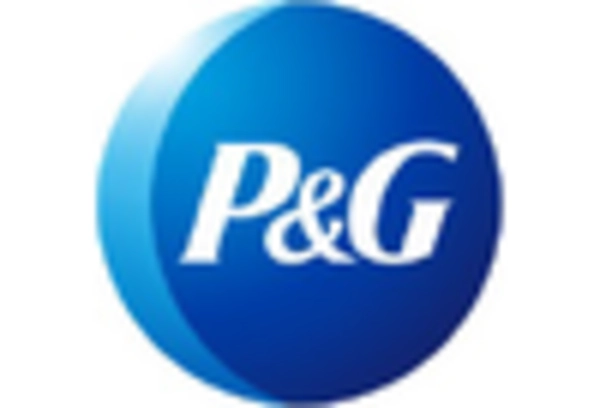Rising Incidence of Skin Disorders
The rising incidence of skin disorders, including dyschromia, is a critical driver of the dyschromia therapeutics market. Factors such as environmental pollution, lifestyle changes, and increased sun exposure contribute to the prevalence of skin conditions. According to recent statistics, approximately 30% of the population in the US experiences some form of skin discoloration, which underscores the urgent need for effective therapeutic solutions. This growing patient population is likely to propel the market forward, with estimates suggesting a market value of $1.2 billion by 2025. The increasing demand for treatments is prompting pharmaceutical companies to invest in research and development, thereby expanding the therapeutic options available in the dyschromia therapeutics market.
Growing Awareness of Skin Conditions
The increasing awareness of skin conditions, particularly dyschromia, is driving the dyschromia therapeutics market. As more individuals recognize the impact of skin discoloration on their self-esteem and quality of life, there is a heightened demand for effective treatments. Educational campaigns and social media have played a pivotal role in disseminating information about dyschromia, leading to a surge in consultations with dermatologists. This trend is reflected in the market, which is projected to reach approximately $1.5 billion by 2026, growing at a CAGR of around 8%. The rising awareness not only encourages patients to seek treatment but also stimulates research and development in the dyschromia therapeutics market, fostering innovation and the introduction of new therapies.
Advancements in Dermatological Research
Recent advancements in dermatological research are significantly influencing the dyschromia therapeutics market. Innovative studies focusing on the underlying mechanisms of skin pigmentation disorders have led to the development of novel therapeutic agents. For instance, the introduction of targeted therapies that address specific pathways involved in dyschromia is gaining traction. This research-driven approach is expected to enhance treatment efficacy and patient outcomes. The market is anticipated to witness a compound annual growth rate (CAGR) of 7% over the next five years, driven by these scientific breakthroughs. Furthermore, collaborations between pharmaceutical companies and research institutions are likely to accelerate the pace of innovation in the dyschromia therapeutics market, resulting in a wider array of treatment options for patients.
Regulatory Support for Innovative Therapies
Regulatory support for innovative therapies is a significant driver of the dyschromia therapeutics market. Regulatory agencies, such as the FDA, are increasingly facilitating the approval process for new treatments aimed at skin disorders. This supportive environment encourages pharmaceutical companies to invest in research and development, leading to the introduction of groundbreaking therapies. The expedited approval pathways for novel treatments are likely to enhance market dynamics, allowing for quicker access to effective solutions for patients suffering from dyschromia. As a result, the dyschromia therapeutics market is expected to experience robust growth, with projections indicating a market size of $1.4 billion by 2026. This regulatory landscape fosters innovation and ensures that patients have access to the latest advancements in dyschromia treatment.
Consumer Preference for Personalized Treatments
Consumer preference for personalized treatments is reshaping the dyschromia therapeutics market. Patients are increasingly seeking tailored therapies that address their specific skin concerns, leading to a shift away from one-size-fits-all solutions. This trend is prompting manufacturers to develop customized treatment plans that consider individual skin types, genetic factors, and lifestyle choices. The market is responding to this demand by offering a range of personalized products, including topical agents and oral medications. As a result, the dyschromia therapeutics market is projected to grow at a CAGR of 6% over the next few years, reflecting the increasing emphasis on personalized medicine. This shift not only enhances patient satisfaction but also improves treatment adherence and outcomes.

















Leave a Comment